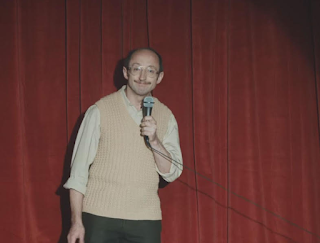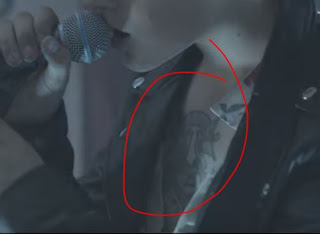The genre of the music video is R&B, and the style of the music video is mainly performance and concept based, however, there are small fragments of narrative, although not dominant.
Theorists applied to the music video:
There are a few theories that can be applied to this music video, for example Goodwin, and how looking into the camera creates a relationship between the audience and the band/star, and that is why having a lot of close ups/extreme close ups is important within the first videos of the musicians. Most of the band has received their fair share of extreme close ups, especially of them singing, or singing into camera, maintaining eye contact with the camera and audience, which creates a relationship between them.
 Not only is Goodwin's notion of looking theory applied to this video, but so is his genre characteristics. The performers can be seen wearing street clothes, such as joggers, trainers and comfortable clothing, which is usual associated with the genre of r&b. Not only that, but also some of the locations appeal to the genre. For example, in this long shot, there is graffiti behind the performer which also sometimes represents the genre. The art behind the performer also has an intertextual reference to extremism and how the modern world is trying to battle it, however, it fights back. However, not only is the issue targeted through visuals, but the social issue is also addressed through he lyrics.
Not only is Goodwin's notion of looking theory applied to this video, but so is his genre characteristics. The performers can be seen wearing street clothes, such as joggers, trainers and comfortable clothing, which is usual associated with the genre of r&b. Not only that, but also some of the locations appeal to the genre. For example, in this long shot, there is graffiti behind the performer which also sometimes represents the genre. The art behind the performer also has an intertextual reference to extremism and how the modern world is trying to battle it, however, it fights back. However, not only is the issue targeted through visuals, but the social issue is also addressed through he lyrics.
Not only is Goodwin applied to the music video, but so is Barthes with semiotics of signs.
The question mark that is shown throughout the music video is representing the question that is asked thoroughly 'Where is the love?' However, to many people, this symbol can represent different things, and therefore appears as polysemous due to making the audience think about the contextual references made within the music video.

Throughout the video, the question mark appears in many different places, such as a Bible, a TV that children are using, crop fields and big city buildings. All of these are placed on such things with a purpose, targeting the lack of love and compassion in the media, religion and the rich. The TV can also link to propaganda or the lies that it spreads that people believe in, and this issue can be seen being addressed through both visuals and lyrics within the video.

This shot is very powerful in the respect that what the objects shown in the shot represent and how their stereotypical connotations change when they are put next to each other. For example, the Statue of Liberty is the universal symbol of freedom, friendship despite the cultural differences that people might have. However, Bathes' theory is supported, yet the whole meaning of this symbol is challenged when the sticker is placed just above it, where the burning flame should be placed, which now changes the meaning to us as people questioning if the love, friendship and freedom is still there and if not, what meaning does the statue bear now? What is freedom worth if one cannot share it with another?
And so, questions just like this one are raised throughout most of the music video and are left for the audience to think about.
How has this research influenced my planning and creativity?
- I am considering using signs to represent some issues and create intertextual references within my own video
- I would love to be able to create massive signs such as the one with the lights on the building, however we cannot physically do that
- This inspired me to consider walking into camera
- I will consider creating a few different narratives within the music video, however I feel that it would be very difficult and confusing for the audience to follow
- Raise powerful questions to the audience about our society and the issues we face as individuals.










